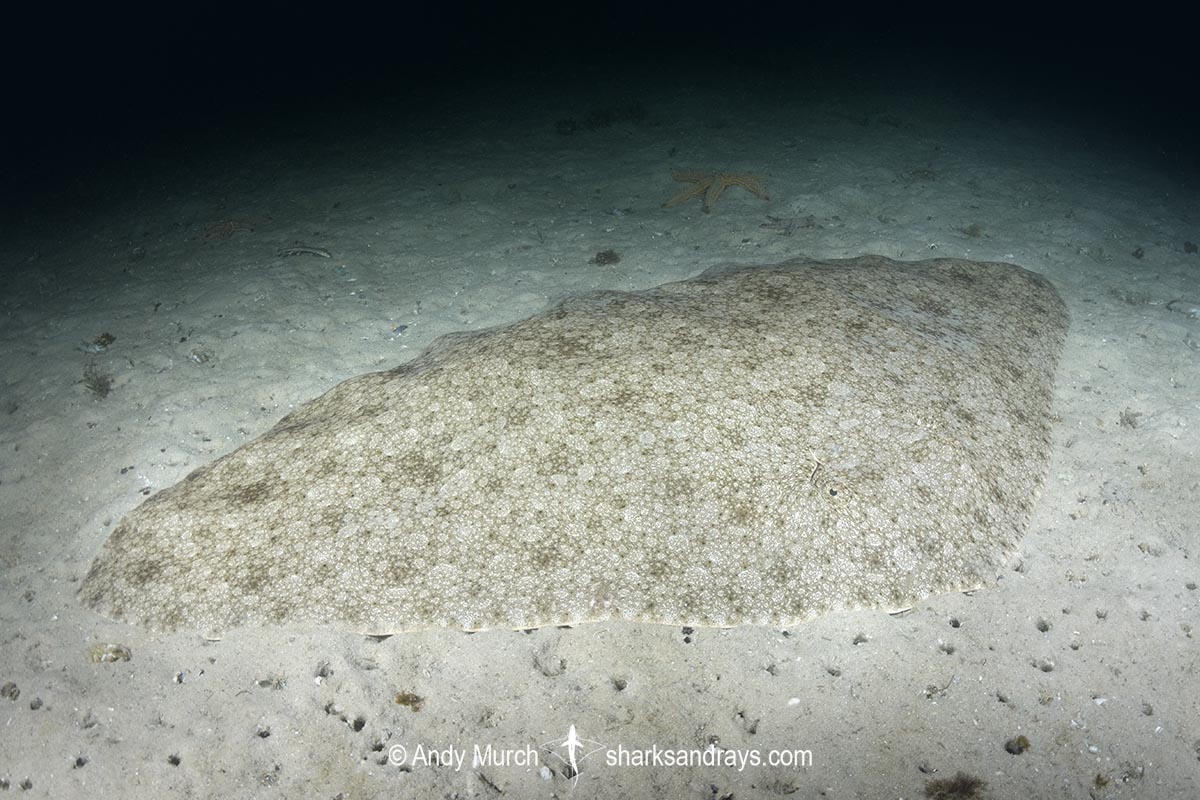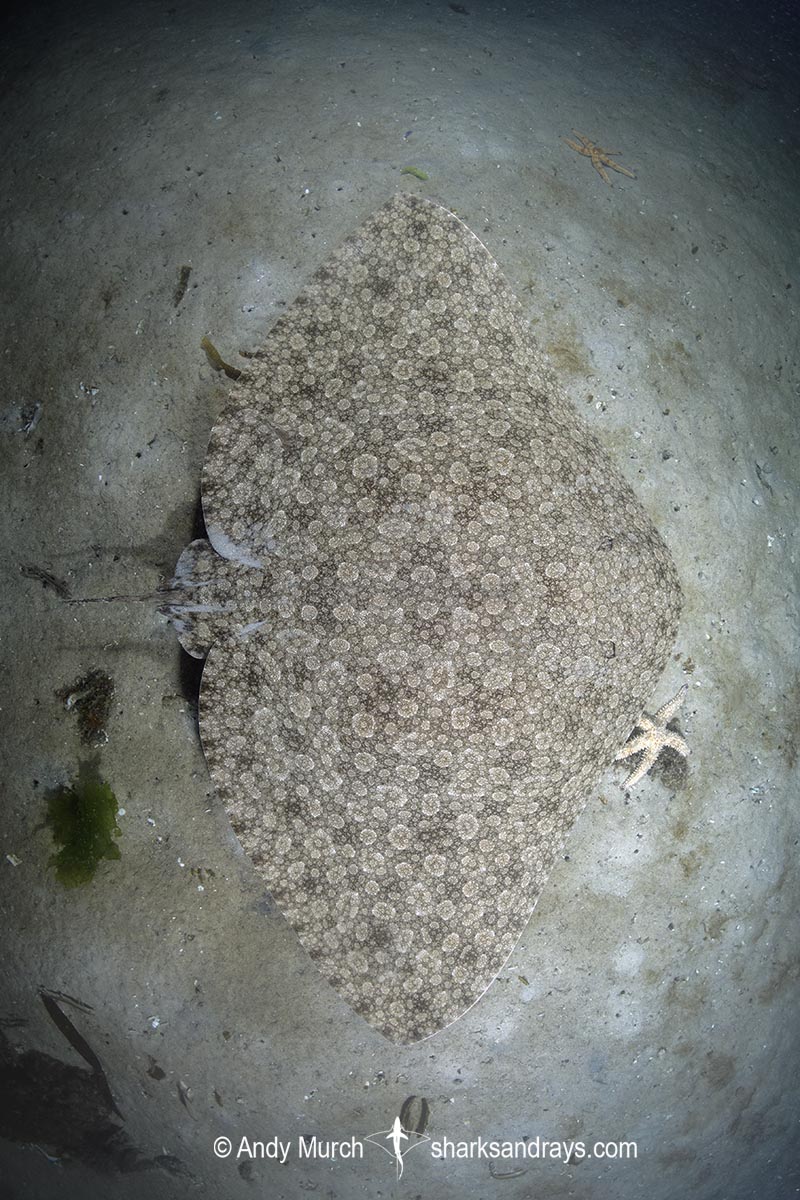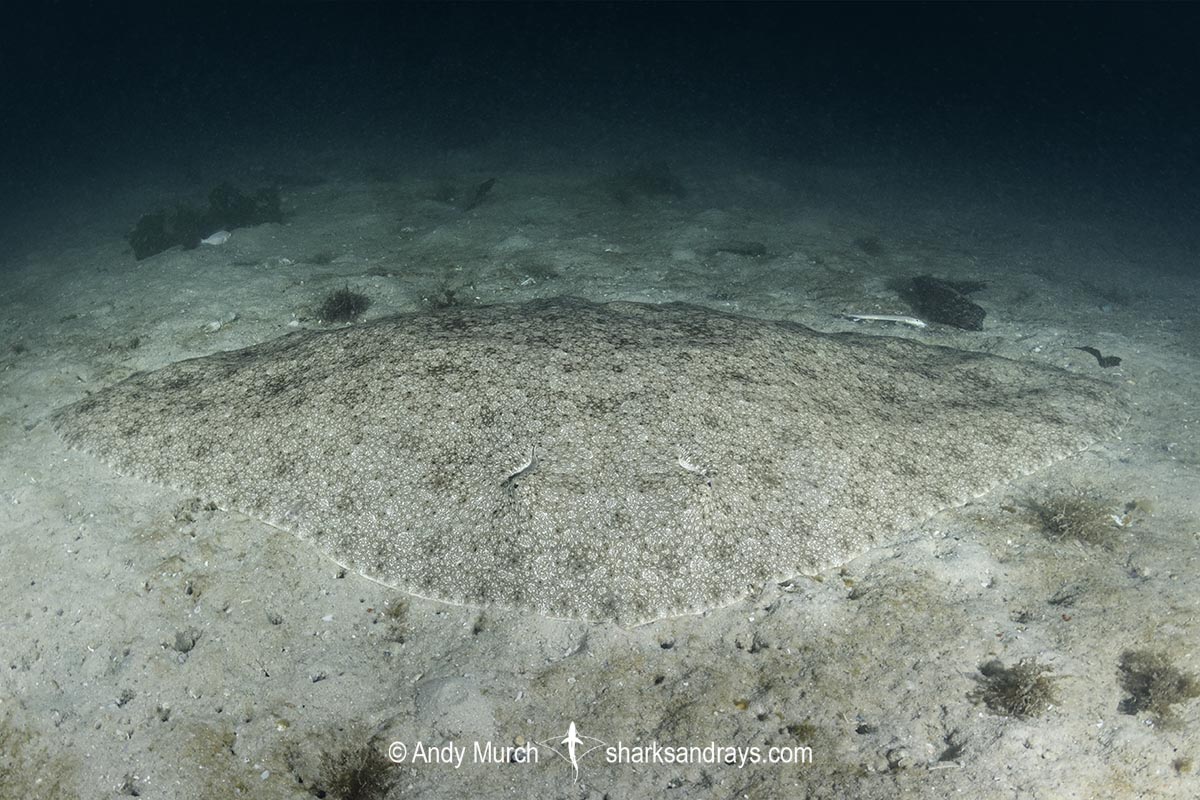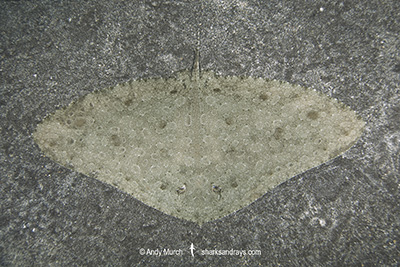Common names
Backwater Butterfly Ray, Diamond Ray.
Binomial
Gymnura natalensis
Synonyms
Pteroplatea natalensis, Urogymnus natalensis.
Identification
A very large butterfly ray with a wide kite-shaped disc. Disc width approximately 1.8-2.2 x length. Pectoral fin apices angular. Snout short; pre-oral length .08-.1 x disc width.
Eyes very small. Thin simple tentacle on posterior margin of each spiracle. Spiracle has a concave inner margin with a convex undulation anterior to tentacle. Mouth arched with a concave symphysis on lower jaw.
Skin generally completely smooth; sometimes with a few scattered denticles in larger adults. Tail very short. 1 or more strong caudal stings usually present.
Colour
Dorsum light grey-brown with large diffuse darker blotches overlaid with a symmetrical pattern of broken white rings (reminiscent of rock lichen). Ventrum white or brownish. Tail usually with 3-5 subtle dark bands.
Size
Maximum disc width 250cm. Disc width at birth 38-47cm.
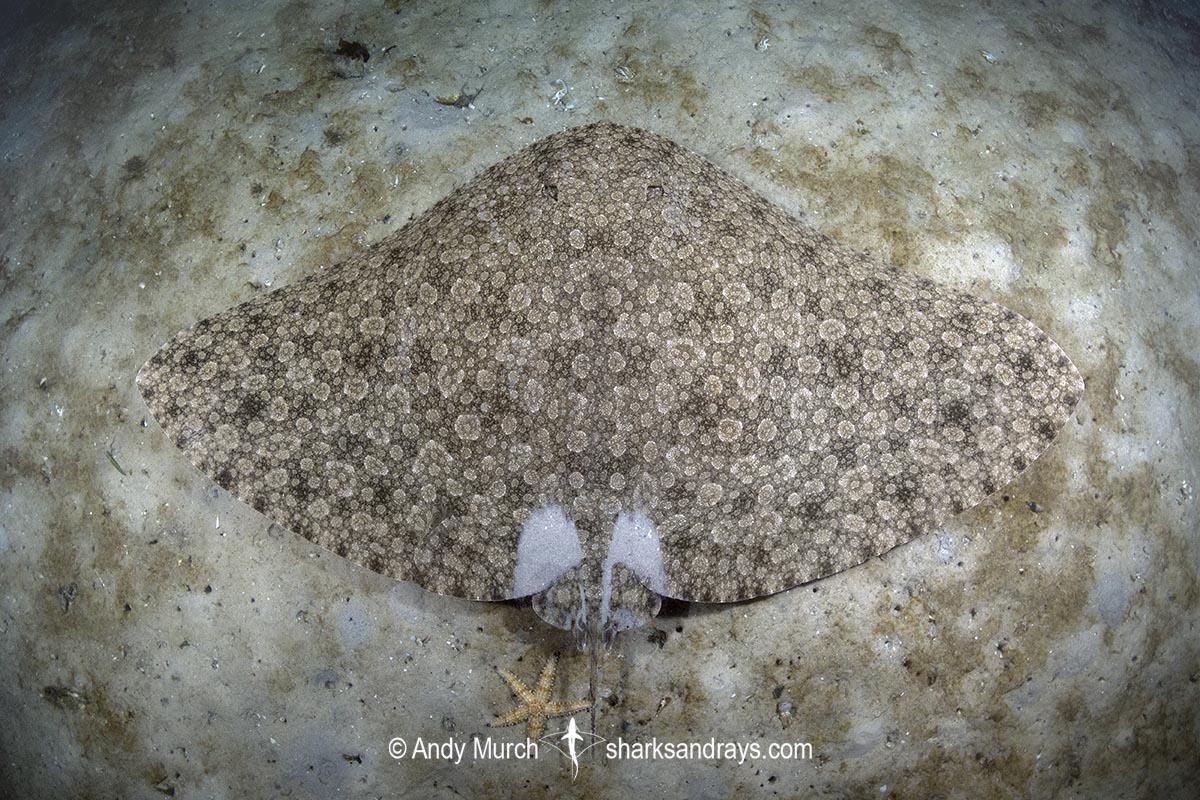
Conservation Status
LEAST CONCERN
The backwater butterfly ray is captured by trawl fisheries, line fisheries, beach seines, and in shark control nets. The main fishery impacting the butterfly population is inshore prawn trawling, but fishing activity has tapered off since 2004. Overall the population is thought to be relatively stable.

Habitat
Tropical to warm-temperate water. On sandy or muddy substrates, often in shallow bays and estuaries. Close inshore to a depth of 75m.
Distribution
Southeastern Atlantic to southwestern Indian Ocean. From Namibia to southern Mozambique.
Reproduction
Aplacental yolk sac viviparous. Litter size varies from 2 to 9. Gestation ~12 months.
Diet
The spiny butterfly ray feeds on crabs, squid, small fishes, and polychaete worms.
Behavior
Sedentary. Camouflages its body with sand by flapping its fins while resting on the bottom.
Reaction to divers
Tolerant if not approached too closely. Will sometimes allow divers to slowly waft sand away from its disc but usually bolts.
Diving logistics
Fairly easy to find on night dives off the main beach in Simonstown, South Africa. I saw 1 or 2 at 5m depth on most night dives in January.
Apparently, they are reasonably easy to encounter around Aliwal Shoal during the winter months.
What’s new
View our full list of updates
Similar species
Spiny Butterfly Ray Distinguished by range and slightly longer spiraculare tentacles. May prove to be synonymous after further study.

